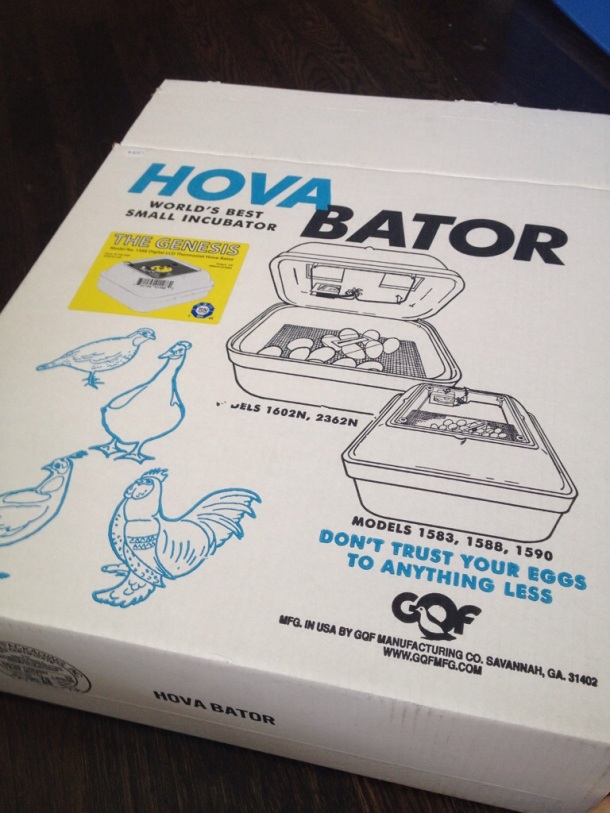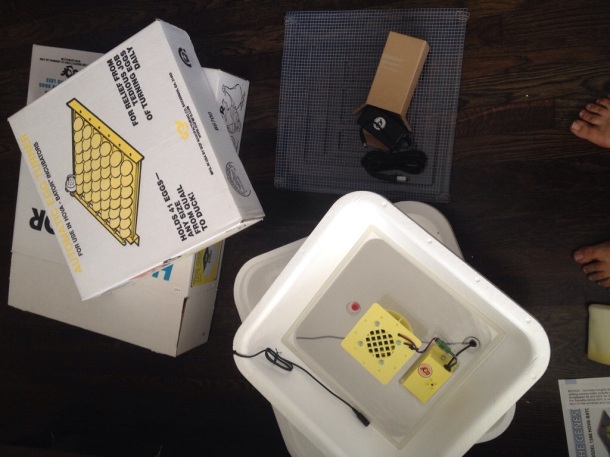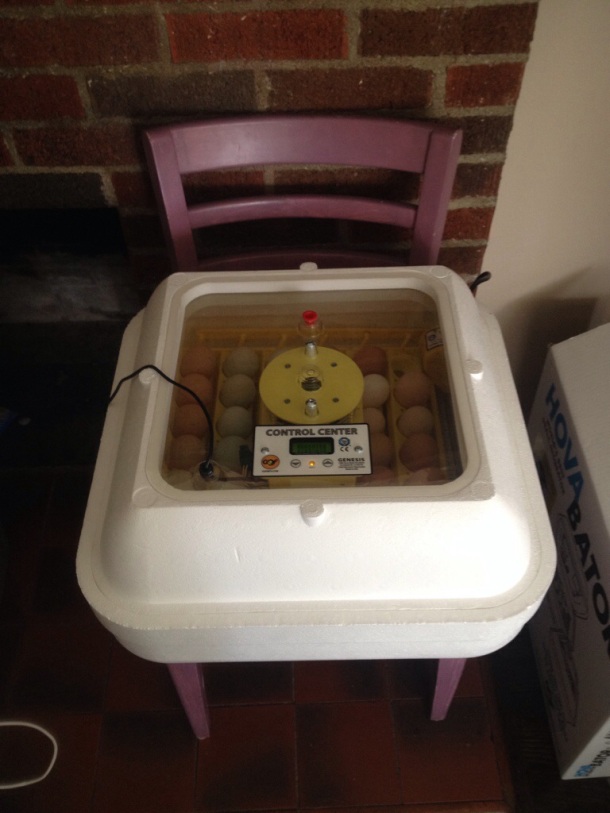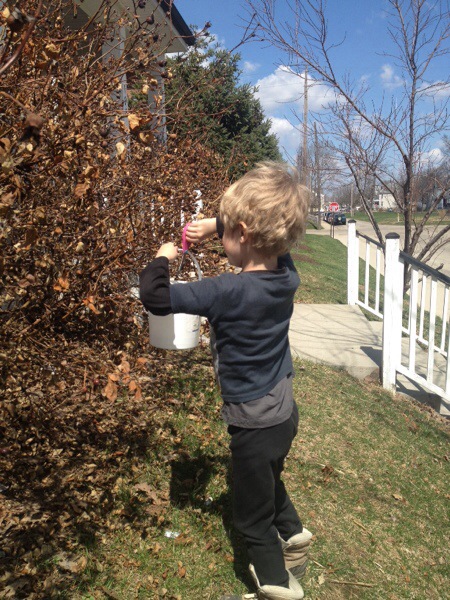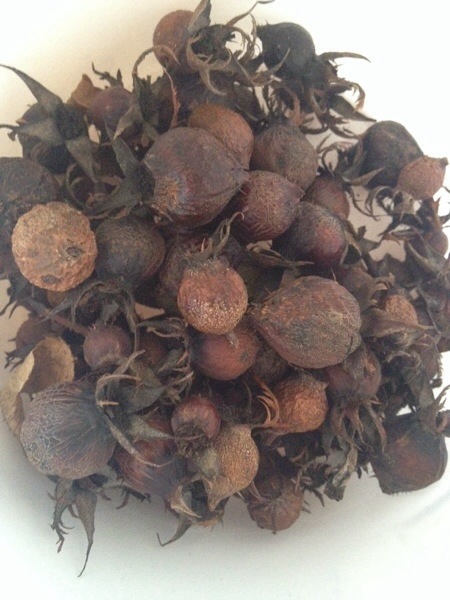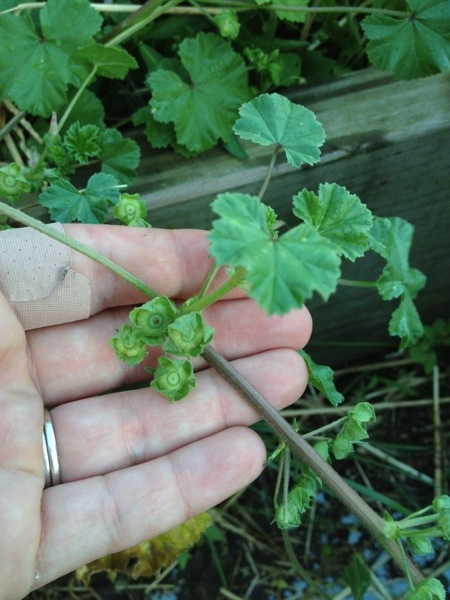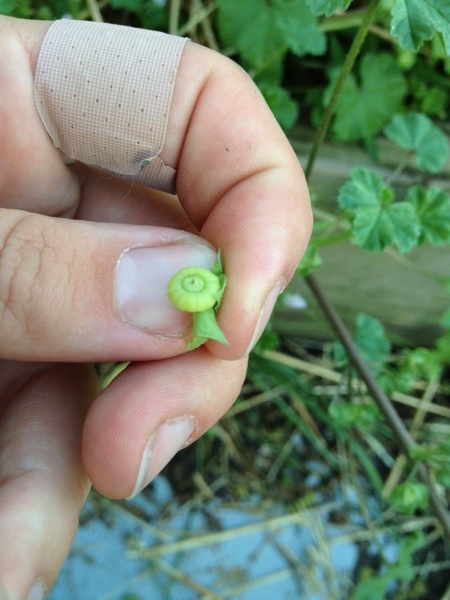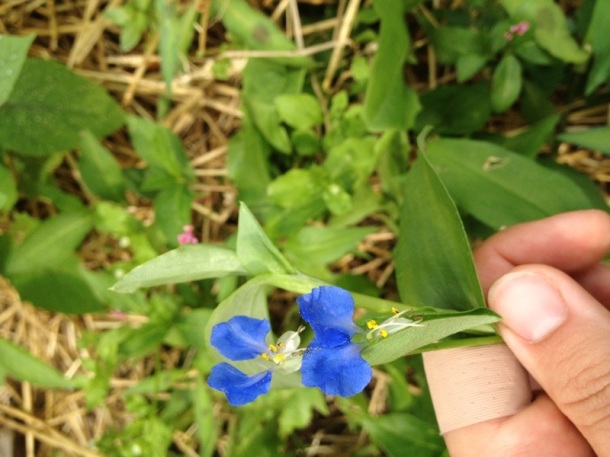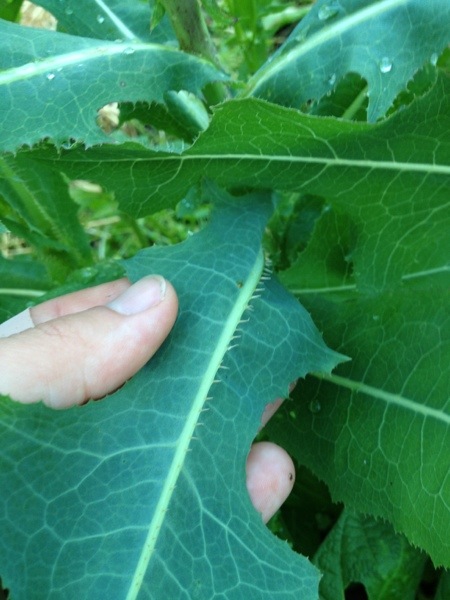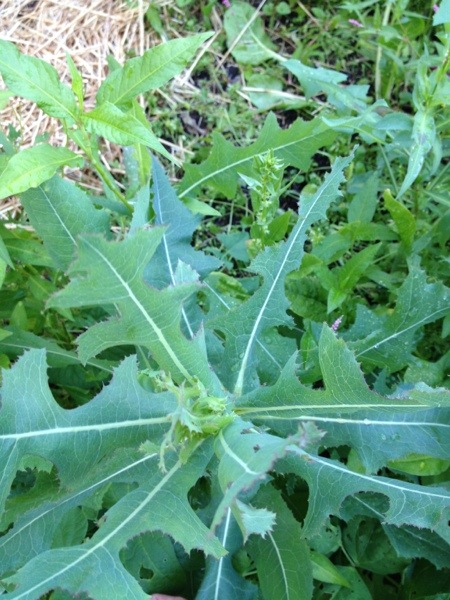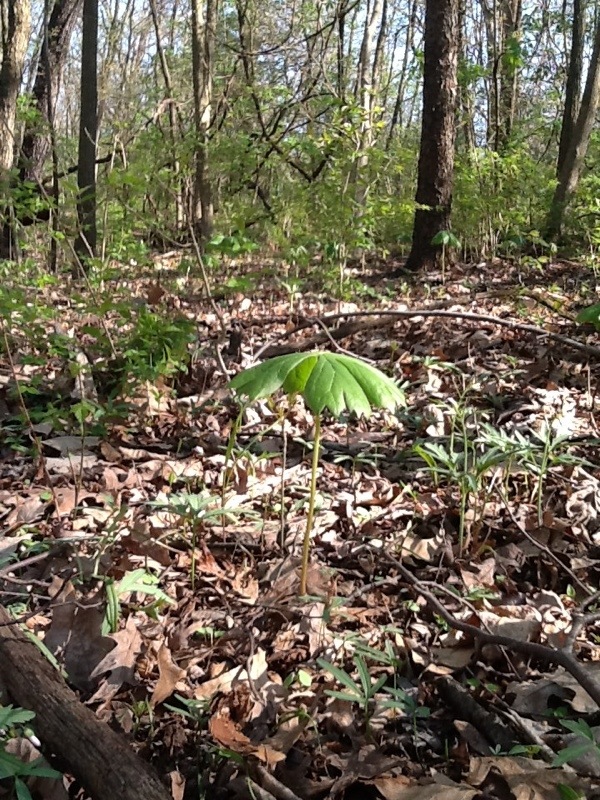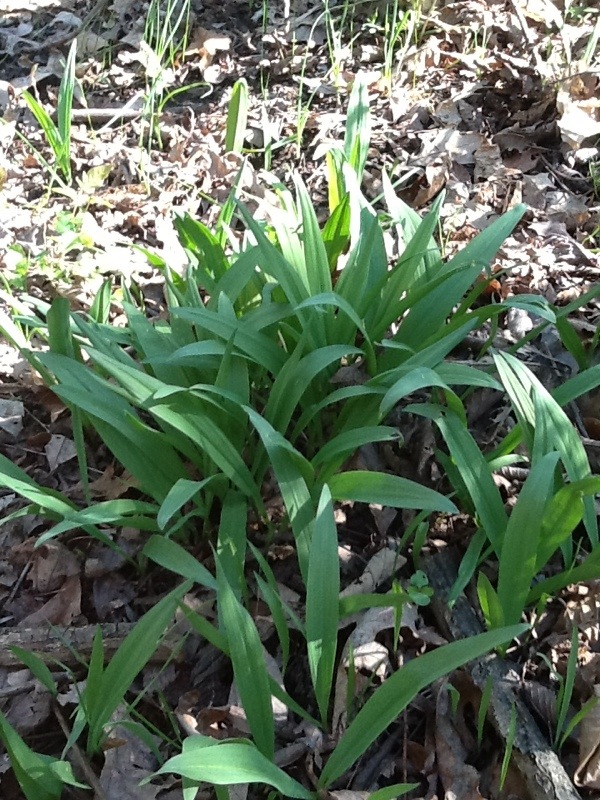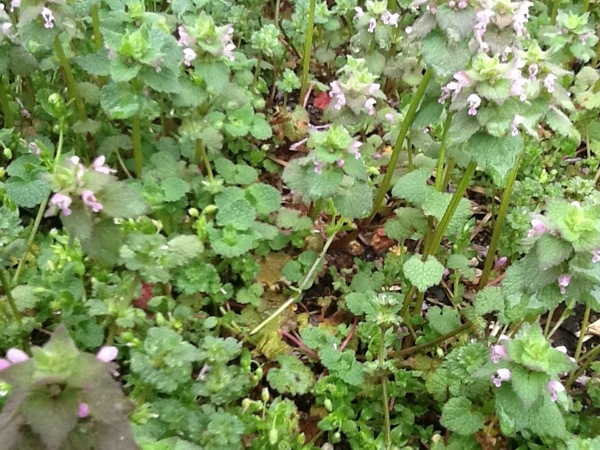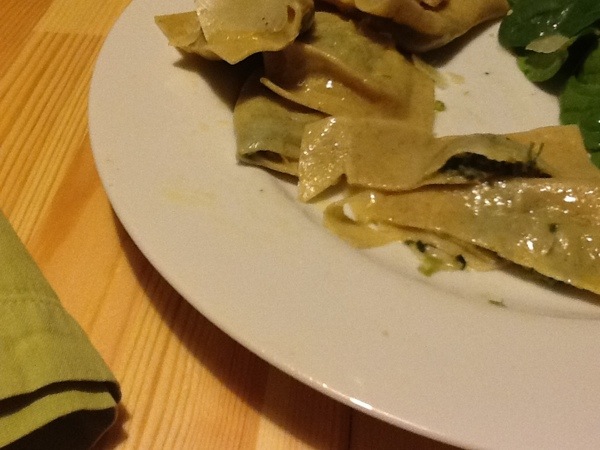
With no documentation of the of the finished product except the above, admittedly lacking, photo, this is one moment that I implore you to take my word for truth. If you like pasta, and especially if you like making pasta, you deserve to treat yourself to fresh, homemade ravioli. A multi-hour affair, this one is not for the weak. But it’s a palate stunner; the perfect dish to serve to a dear friend for whom a bit of work is no sacrifice or someone that you really want to impress. Make it for people who will love it.
On to the recipe. Upon sourcing ingredients for a ravioli dish earlier this year, I learned that chèvre is a traditional ravioli filling. For my lactose-intolerant self, this knowledge (imparted by local Cheesemonger Michael Kent of Curds and Whey) was nearly life-altering. I had not eaten ravioli since 2008, and it surely had always been filled with ricotta. I thought that it was dish that was simply out of my reach now.
This recipe is heavily adapted from one in Tama Matsuoka Wong’s book Foraged Flavor. I feel comfortable posting it here due to the many changes I’ve made to suit the recipe to my dietary needs and the desires.
Ravioli with Wild Greens and Chèvre
Pasta dough:
1/2 cup all-purpose flour
1/2 cup rye flour
2 large eggs
1 teaspoon olive oil
pinch of salt
Filling:
1 Tablespoon butter, ghee, or olive oil
1 1/2 ounces red dead nettle (top 2 inches, including flowers)
1 ounce chickweed (tender parts only)
1 ounce wild garlic chopped coarsely (bulb and greens)
Salt
Freshly ground pepper
3 ounces chèvre
1/4 cup grated pecorino romano
1. Filling: Over medium heat, melt the butter (or ghee or olive oil). Add greens and cook until soft, 2 to 3 minutes.
2. In a food processor or blender, process cooked greens until fairly smooth but still retaining texture, less than a minute. Transfer to a medium bowl and combine with both cheeses. Add salt and pepper to tasty. Refrigerate until your pasta is ready to be filled.
3. Dough: Mix together flours, one egg, the yolk of the second egg (reserve white for step 4) olive oil and salt. Adding flour as needed to prevent sticking, knead dough on a flat surface for about 5 minutes, until it is supple, smooth and elastic. Wrap in plastic and allow to rest 30 minutes.
4. Using a pasta machine, roll dough to two notches from the thinnest setting (7 out of 9 for mine). On one sheet, place teaspoonfuls of filling, leaving one inch between each(this works out to two raviolis per row when I machine-roll my dough). Wet your finger with the reserved egg white, and run it between each drop of filling in horizontal and vertical motions. Include all edges, and re-wet your finger as needed. Place the other sheet of dough on top. Beginning with the center, press the dough down between each drop of filling to seal the ravioli, pushing air bubbles out toward the edges. Using a pizza cutter or knife, cut the ravioli into squares, checking the seal on the edges as you go.
5. In a non-stick skillet over low heat, melt 2 tablespoons of butter or ghee.
6. Bring a large pot of salty water to a boil. Cook the ravioli in batches to prevent sticking. Test one to see how long yours take to cook. As each batch finishes, transfer them to the skillet and toss in the melted butter.
7. Serve immediately, topped with large shavings of pecorino romano.
If you make this, please do let me know how you find it. There are many options for substitutions, and I’ll happily provide some if you have questions about ingredients.
